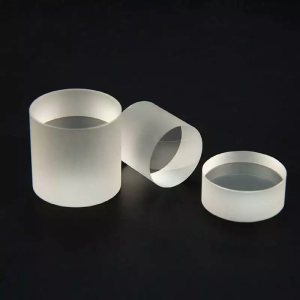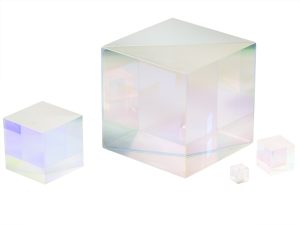
Quadrangular Prism: An Important Component in Optics
The Quadrangular Prism controls the trajectory of light with precise refraction and reflection, realizes splitting, deflection and imaging, and unlocks the infinite possibilities of optical instruments and scientific research from spectral analysis to laser communication.
Quadrangular Prism is a common optical component widely used in optical experiments, instrument manufacturing and scientific research. It can achieve functions such as splitting, deflection and imaging of light by refracting and reflecting light. This article will introduce the structure, working principle and application of the prism in detail.
1. Basic structure of prism
A prism is a prism with four faces, usually made of transparent materials such as glass or optical plastic. Its shape is similar to a cuboid, but the four faces are precisely cut and polished to ensure accurate refraction and reflection of light. The four faces of a prism are usually arranged at right angles or specific angles, and the specific design depends on its application requirements.
2. Working principle of prism
The working principle of a prism is based on the refraction and reflection of light. When light enters a prism, it is refracted inside the prism, then reflected or refracted again on the facets of the prism, and finally emitted from the other side of the prism. The design of the prism allows light to be specifically deflected or split when passing through the prism, thereby achieving different optical effects.
1. Refraction: When light passes from one medium into another, its propagation direction changes. This phenomenon is called refraction. The prism can change the propagation direction of light through the refraction of its facets.
2. Reflection: Light is reflected on the facets inside the prism, and the reflection angle is equal to the incident angle. By precisely designing the angle of the prism, a specific deflection of light can be achieved.
3. Splitting: The prism can also be used for splitting, that is, decomposing composite light into monochromatic light of different wavelengths. This is achieved by the prism having different refractive indices for light of different wavelengths.
3. Application of prisms
Prisms are widely used in the field of optics. Here are some common application scenarios:
1. Optical instruments: prisms are often used in optical instruments such as telescopes, microscopes and lasers. They can be used to adjust the light path, deflect light or achieve specific optical effects.
2. Spectral analysis: In spectral analysis, prisms are used to decompose composite light into monochromatic light of different wavelengths, thereby analyzing the spectral composition of the light source. This is of great significance in the study of chemistry, physics and astronomy.
3. Laser technology: In laser technology, prisms are used to adjust the direction and shape of laser beams to ensure precise focusing and transmission of laser beams.
4. Optical communication: In optical fiber communication systems, prisms are used to modulate and split optical signals to improve the efficiency and stability of communication systems.
5. Teaching experiments: prisms are commonly used tools in optical teaching experiments to demonstrate the refraction, reflection and spectroscopic phenomena of light, helping students understand optical principles.
4. Manufacturing and materials of quadrangular prisms
The manufacturing of quadrangular prisms requires high-precision processing technology to ensure their optical performance. Commonly used materials include optical glass (such as BK7, fused quartz) and optical plastics. These materials have high transparency, low scattering and stable optical properties, which can meet the needs of different applications.
During the manufacturing process, the facets of the quadrangular prism need to be precisely cut, polished and coated to ensure the accurate refraction and reflection of light. In addition, the surface of the quadrangular prism needs to be anti-reflective to reduce the loss and interference of light.
5. Summary
As an important optical element, the quadrangular prism plays an important role in optical experiments, instrument manufacturing and scientific research. By refracting and reflecting light, the quadrangular prism can realize the functions of light splitting, deflection and imaging, and is widely used in optical instruments, spectral analysis, laser technology and optical communications. With the continuous development of optical technology, the application prospects of quadrangular prisms will be broader.
By understanding the structure, working principle and application of quadrangular prisms, we can better understand the basic principles of optical technology and explore its innovative applications in various fields.
Hanzhong Brisun Optics Co., Ltd. Is the high precision optical element manufacturer provides customized production of Various optical lenses, including spherical lens, cylindrical lens, optical window, mirror, prism, filter, metal base mirror and other high-precision optical elements. The base materials include various optical glass, fused quartz, calcium fluoride (CaF2), zinc selenide (ZnSe), germanium (GE), silicon (SI), sapphire, metal and other materials. And provide antireflective film, high reflection film, spectroscopic film, metal film and other optical coatings.
Welcome to OEM and Purchasing!


